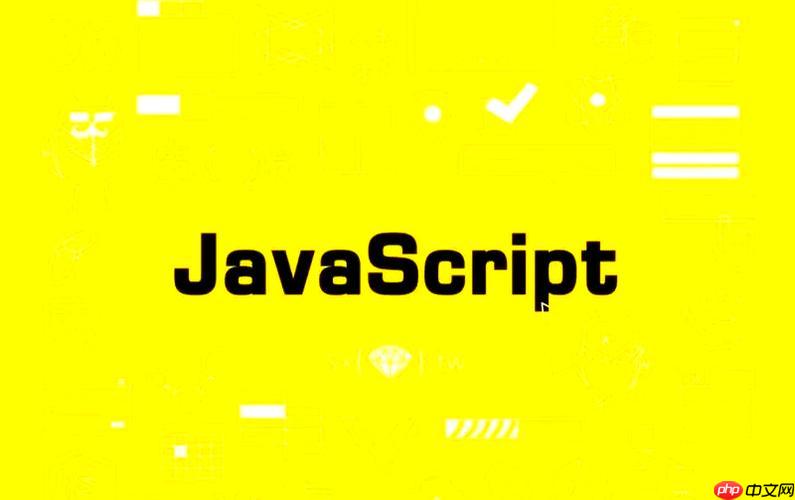在javascript中获取当前时间的时间戳,推荐使用date.now(),因为它是静态方法,无需创建实例,性能更优且代码简洁;而new date().gettime()需先创建date对象再调用实例方法,略显冗余且性能稍低;两者均返回自1970年1月1日utc以来的毫秒数;1. date.now() 是es5引入的静态方法,直接返回时间戳;2. new date().gettime() 是实例方法,需先实例化date对象;3. 实际开发中时间戳常用于日志记录、缓存控制、唯一id生成、性能测量、定时任务和数据排序;4. 将时间戳转换为可读日期可使用new date(timestamp)创建日期对象,再通过tostring()、todatestring()、tolocalestring()等方法格式化输出;5. 如需更灵活的国际化格式化,应使用intl.datetimeformat api进行定制化显示。

在JavaScript中获取当前时间的时间戳,通常有两种主流且直接的方法。它们都能让你迅速拿到自1970年1月1日00:00:00 UTC(协调世界时)以来经过的毫秒数,这是计算机世界里约定俗成的时间表示方式。
解决方案 说起JavaScript里时间戳这事儿,其实挺简单,但里头也有些小门道值得琢磨。最直接的,大家可能想到的就是
Date.now()
const timestampNow = Date.now(); console.log(timestampNow); // 例如: 1678886400000
当然,老派一点的写法,或者说你可能在一些老项目中看到的,
new Date().getTime()
const dateObject = new Date(); const timestampGetTime = dateObject.getTime(); console.log(timestampGetTime); // 例如: 1678886400000
我个人习惯用
Date.now()
getTime()
这可能是很多人初学时会疑惑的地方,包括我自己在内,刚开始也觉得这俩东西是不是完全一样。实际上,它们确实都返回当前时间的毫秒级时间戳,但实现机制和一些细节上还是有区别的。
Date.now()
Date
Date
而
new Date().getTime()
new Date()
Date
getTime()
Date
从性能角度看,
Date.now()
new Date().getTime()
new Date()
Date.now()
Date.now()
Date.now()
时间戳这玩意儿,别看它只是一个数字,但在Web开发中简直是万金油般的存在,用途非常广泛。
style.css?v=1678886400000
const start = Date.now();
// 假设这里有一段耗时操作
for (let i = 0; i < 1000000; i++) {
Math.sqrt(i);
}
const end = Date.now();
console.log(`操作耗时: ${end - start} 毫秒`);这些场景都离不开时间戳这个核心概念,它提供了一种简洁、统一且机器友好的时间表示方式。
拿到一串像
1678886400000
最直接的方法,就是把这个时间戳作为参数传给
new Date()
Date
Date
const timestamp = 1678886400000; // 假设这是你获取到的时间戳
const date = new Date(timestamp);
console.log(date.toString()); // 例如: "Tue Mar 14 2023 08:00:00 GMT+0800 (中国标准时间)"
console.log(date.toDateString()); // 例如: "Tue Mar 14 2023"
console.log(date.toTimeString()); // 例如: "08:00:00 GMT+0800 (中国标准时间)"
console.log(date.toLocaleString()); // 例如: "2023/3/14 上午8:00:00" (根据本地时区和格式)
console.log(date.toLocaleDateString());// 例如: "2023/3/14"
console.log(date.toLocaleTimeString());// 例如: "上午8:00:00"
// 获取具体的年、月、日、时、分、秒
const year = date.getFullYear();
const month = date.getMonth() + 1; // 月份是从0开始的
const day = date.getDate();
const hours = date.getHours();
const minutes = date.getMinutes();
const seconds = date.getSeconds();
console.log(`${year}-${month}-${day} ${hours}:${minutes}:${seconds}`); // 简单拼接:2023-3-14 8:0:0如果你对日期格式有更精细的控制需求,或者需要支持多语言环境下的日期格式化,
Intl.DateTimeFormat
const timestamp = 1678886400000;
const date = new Date(timestamp);
// 使用 Intl.DateTimeFormat 进行更灵活的格式化
const formatter = new Intl.DateTimeFormat('zh-CN', {
year: 'numeric',
month: 'long',
day: 'numeric',
hour: '2-digit',
minute: '2-digit',
second: '2-digit',
hour12: false // 使用24小时制
});
console.log(formatter.format(date)); // 例如: "2023年3月14日 上午08:00:00"
// 还可以指定其他区域,例如美式英语
const usFormatter = new Intl.DateTimeFormat('en-US', {
weekday: 'short',
year: 'numeric',
month: 'short',
day: 'numeric'
});
console.log(usFormatter.format(date)); // 例如: "Tue, Mar 14, 2023"选择哪种方式,取决于你的具体需求和对兼容性的考量。对于大多数简单应用,
toLocaleString()
Intl.DateTimeFormat
以上就是js怎么获取当前时间的时间戳的详细内容,更多请关注php中文网其它相关文章!

每个人都需要一台速度更快、更稳定的 PC。随着时间的推移,垃圾文件、旧注册表数据和不必要的后台进程会占用资源并降低性能。幸运的是,许多工具可以让 Windows 保持平稳运行。

Copyright 2014-2025 https://www.php.cn/ All Rights Reserved | php.cn | 湘ICP备2023035733号